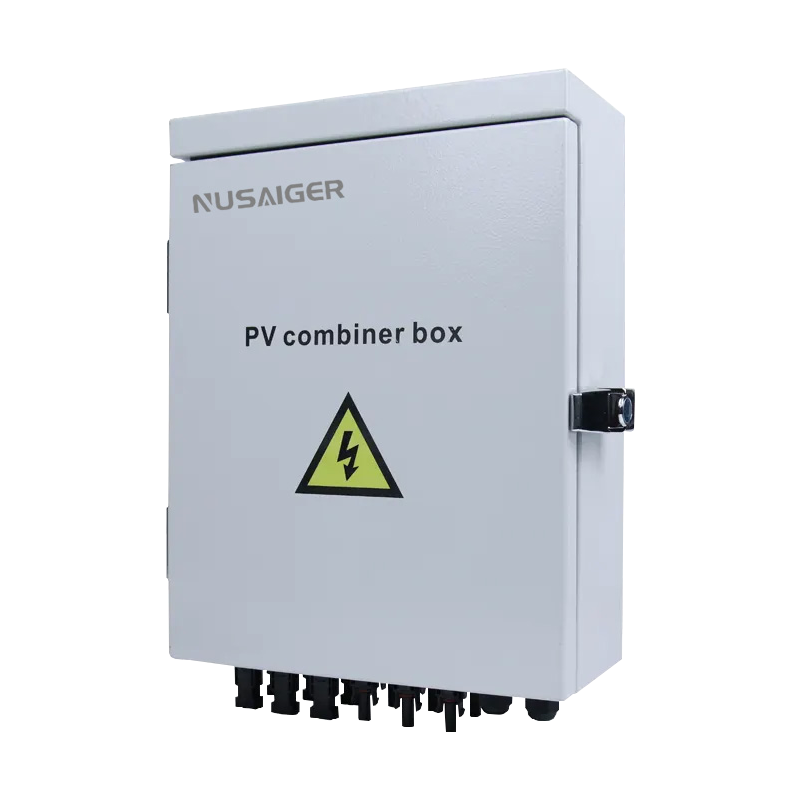Future Trends of PV Combiner Boxes: Smart Monitoring, Safety Upgrades, and Digitalization
The photovoltaic (PV) combiner box is evolving from a simple electrical protection component into a critical hub of smart monitoring, predictive maintenance, and digital integration for solar energy systems. In large-scale solar plants, the combiner box now plays a central role in enhancing operational efficiency, ensuring safety, and providing real-time data for system optimization.
Introduction
Historically, PV combiner boxes were used to consolidate multiple strings into a single output, providing overcurrent protection and surge protection. Modern solar energy requirements demand a more intelligent solution. With smart monitoring, Internet of Things (IoT) connectivity, and digital twin capabilities, PV combiner boxes are becoming intelligent devices capable of predictive maintenance, fault detection, and remote operations.
From Traditional to Smart Combiner Boxes
Modern PV combiner boxes integrate the following innovations:
- Real-time Monitoring: Sensors measure voltage, current, temperature, and humidity for each string.
- Communication Capabilities: Modules support Modbus RTU/TCP, RS485, Ethernet, or wireless communication to SCADA and cloud platforms.
- Predictive Maintenance: Data analytics detect early signs of fuse aging, SPD degradation, or abnormal cable heating.
- Enhanced Safety: Arc-fault detection (AFCI), surge protection, and environmental monitoring improve overall system safety.
Technical Specifications Example
| Specification | Typical Value |
|---|---|
| Rated Input Voltage | 1000V / 1500V DC |
| Rated Current per String | 15A – 30A |
| Number of Strings | 4 – 32 |
| Surge Protection Device (SPD) | Type II, 20kA/40kA |
| Operating Temperature | -25°C to +60°C |
| Enclosure Material | IP65, Powder-coated Aluminum or Stainless Steel |
| Communication Protocol | Modbus RTU/TCP, RS485, Ethernet, optional wireless IoT |
| Optional Sensors | Temperature, Humidity, Voltage, Current, Arc-fault |
Smart Monitoring and IoT Integration
Intelligent combiner boxes use multiple sensors to provide high-resolution data on each PV string. Data is transmitted using:
- Modbus RTU / TCP: Standard industrial communication protocol for SCADA integration.
- RS485: Reliable serial communication in long-distance solar farms.
- Wireless IoT: NB-IoT, LoRaWAN, or LTE-M modules enable real-time cloud monitoring.
Advanced monitoring enables predictive analysis of energy production, early detection of underperforming strings, and real-time alarms for operators. Cloud-based dashboards provide system KPIs, historical trends, and anomaly detection for large-scale PV plants.
Enhanced Safety Features
Next-generation PV combiner boxes include:
- Arc-fault detection (AFCI): Detects electrical arcs to prevent fire hazards.
- Advanced surge protection: Type II and Type III SPDs mitigate transient overvoltages caused by lightning or switching events.
- Environmental monitoring: Temperature, humidity, and dust sensors alert operators to hazardous conditions within the enclosure.
- Fire-resistant enclosures: UL94-V0 rated materials and high IP ratings (IP65–IP66) for outdoor durability.
Predictive Maintenance with Data Analytics
Using AI and machine learning, smart PV combiner boxes allow predictive maintenance:
- Early detection of fuse aging or SPD degradation.
- Identification of abnormal current or voltage fluctuations per string.
- Reduction in downtime and operational costs for large-scale plants.
- Historical trend analysis for preventive planning of O&M tasks.
Digital Twin Technology in Solar O&M
Digital twin technology simulates PV system performance using real-time combiner box data:
- Virtual modeling of PV arrays to predict potential failures.
- Simulation of environmental impact on electrical components.
- Optimization of preventive maintenance schedules and energy yield prediction.
Cybersecurity for Smart PV Infrastructure
Connected combiner boxes are vulnerable to cyber threats. Mitigation strategies include:
- Encrypted communication channels using TLS/SSL.
- Secure authentication protocols for remote access.
- Regular firmware updates and intrusion detection monitoring.
- Compliance with IEC 62443 and NERC CIP cybersecurity standards.
Design Evolution for Next-Gen Combiner Boxes
- Modular Design: Allows easy expansion and maintenance without system shutdown.
- Hybrid-readiness: Supports integration with energy storage and microgrid systems.
- Sustainability: Use of recyclable materials and eco-friendly coatings.
- Environmental Adaptability: Designed for high-temperature, high-humidity, and coastal environments.
Case Studies of Smart Combiner Box Deployments
Utility-scale Solar Farm Example:
- Location: Arizona, USA, 150 MW plant.
- Deployment: 500 smart combiner boxes, each monitoring 12 strings.
- Benefits: Reduced downtime by 30%, improved energy yield by 5%, early fault detection prevented potential fire hazard.
- Integration: Connected to central SCADA system with cloud-based analytics for predictive maintenance.
Future Outlook (2025–2035)
The adoption of smart, digitally integrated PV combiner boxes is expected to rise globally. Key trends:
- Standardization and certification for IoT-enabled PV components.
- Integration with AI-powered analytics platforms for predictive O&M.
- Expansion of hybrid and storage-ready combiner boxes for microgrid compatibility.
- Increased use of digital twin models for energy yield optimization and risk reduction.
Frequently Asked Questions (FAQ)
Q1: What is a smart PV combiner box?
A smart PV combiner box integrates sensors, communication modules, and IoT capabilities for real-time monitoring, predictive maintenance, and enhanced safety.
Q2: How does predictive maintenance work?
Predictive maintenance uses data analytics and AI algorithms to anticipate failures in components like fuses, SPDs, or cables, allowing proactive repairs.
Q3: Are smart combiner boxes compatible with energy storage?
Yes, many next-generation combiner boxes are hybrid-ready, allowing seamless integration with solar + storage systems.
Q4: What are the common environmental challenges for combiner boxes?
High temperatures, humidity, dust, and salt spray (coastal areas) are the most common challenges. Next-gen combiner boxes include IP65/IP66 enclosures, temperature sensors, and corrosion-resistant materials to mitigate these issues.
Q5: How does IoT integration improve O&M efficiency?
IoT integration allows remote monitoring, automatic alerts, and real-time data visualization, reducing manual inspections and improving decision-making for maintenance schedules.
Conclusion
PV combiner boxes are no longer just protective components—they are evolving into digital intelligence hubs. By integrating smart monitoring, predictive analytics, safety enhancements, and IoT capabilities, these devices improve system reliability, optimize energy yield, and reduce operational costs. Forward-thinking solar operators should adopt next-generation combiner boxes to stay ahead in the rapidly evolving solar energy landscape.



